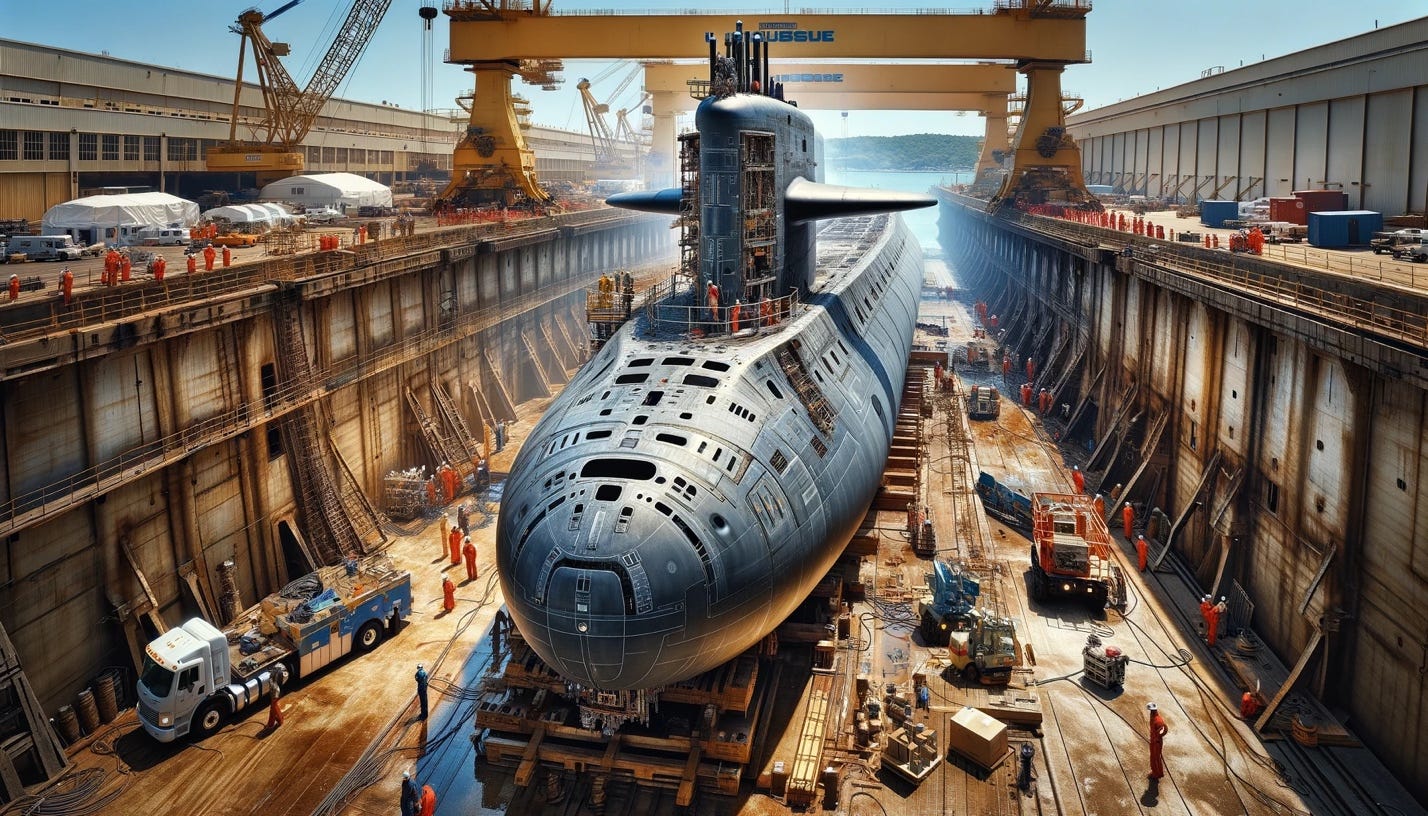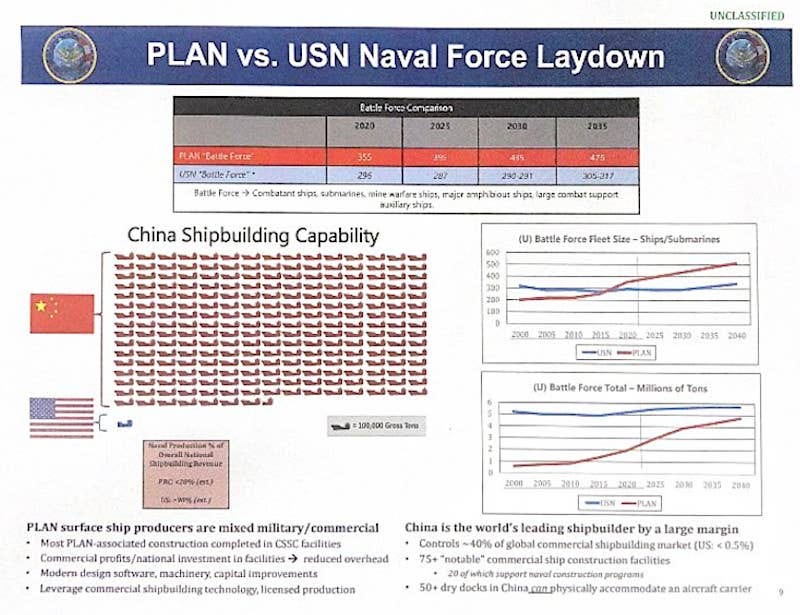Key takeaways
Historical Precedent: The US defense industry, pivotal in winning WWII and the Cold War, faces a critical juncture. The consolidation of contractors into a few "primes" has stifled innovation and competitiveness.
The Need for Advanced Tech: Recent failures in hypersonic missile development and ammunition supply underscore the pressing need for a technologically agile defense sector. To compete effectively, the US must prioritize investments in cutting-edge technologies such as AI, drones, and connectivity, leveraging the innovation prowess of Silicon Valley startups.
Industrial Policy is National Security Policy: The strength of the defense industrial base directly correlates with national security and economic power. By promoting competition through antitrust measures, investing in high-tech sectors, and bolstering domestic manufacturing capabilities like shipbuilding, the US can ensure its continued leadership in defense and fulfill its global security obligations.
US Industrial Policy Series
1. Overview
2. Metals
3. Defense Base
US industry won WW2. Not only did American firms supply they’re own forces, but they supplied all allies, including the Soviet Union, with material to win both the war in Europe and the war in the Pacific decisively. Industry supplied both mass and cutting-edge weapons technology. Dropping the atom bomb on Japan was controversial but its technical sophistication was not. During the Cold War, the USSR could not keep up with the weapons systems deployed by the US, despite devoting a much larger portion of their economy to military output. America won that conflict without a devastating war.
Then beginning in the 1980s and accelerating after the end of the Cold War, the defense industry began to consolidate. Multitudes of small, agile, innovative firms became five lumbering “prime” contractors, unable to deliver projects on cost or budget. A revolving door of high-level government officials filled the boardrooms of these crony contractors and the green rooms of the TV studios that promote their message. In 2022, the Pentagon released a scathing report on defense industry consolidation:
Since the 1990s, the defense sector has consolidated substantially, transitioning from 51 to 5 aerospace and defense prime contractors. As a result, DoD is increasingly reliant on a small number of contractors for critical defense capabilities. Consolidations that reduce required capability and capacity and the depth of competition would have serious consequences for national security. Over approximately the last three decades, the number of suppliers in major weapons system categories has declined substantially: tactical missile suppliers have declined from 13 to 3, fixed-wing aircraft suppliers declined from 8 to 3, and satellite suppliers have halved from 8 to 4. Today, 90% of missiles come from 3 sources[i]
The US must once again become the arsenal of democracy by revitalizing its defense industrial base. Doing so will stave off increasing global threats, create middle-class jobs, and maximize dignity and human rights in the world. This paper will explore recent failures in the current defense industry, propose breaking up large defense companies, and articulate the need for investments in cutting edge areas like defense-tech.
Failure to launch
On March 13, 2023, a US Air Force jet off the California coast test fired a prototype AGM-183A Air-launched Rapid Response Weapon (ARRW) hypersonic missile being developed by Lockheed Martin. Hypersonic weapons travel at speeds above Mach 5 and are highly maneuverable, making them difficult to track and shoot down. China and Russia have invested considerable resources in developing these weapons for their militaries, and several US lawmakers have expressed concern that the country is not doing enough to field its own hypersonic capabilities.[ii] The test failed. “We did not get the data that we needed from that test, they’re currently examining that, trying to understand what happened.”[iii]
In Ukraine, which the NATO chief calls “a battle of ammunition”[iv], Russian forces have a 10:1[v] artillery advantage that may prove decisive to the war’s outcome. The European defense industry and notably American ammo suppliers have not been able the keep up with Ukrainian needs. Partisans argue that political deadlock over supplying new military aid is to blame, but the reality is that industry can’t produce enough ammo today even if funding was ample. Russia is expected to deliver 4 million artillery shells to Ukraine in 2024 (2 million made in Russia and 2 million made in North Korea).[vi] Meanwhile, the entire EU will only provide half of the 1 million shells it promised by March 2024[vii]. Before Russia's invasion of Ukraine, the US was producing 15,000 a month. The Pentagon is hoping to ramp up production by 500% in the next two years[viii]. At current rates, that’s 180,000 shells today and 900,000 shells in two years, still far short of Russia’s current 4 million shells per year. And that’s before factoring in the US defense commitment to Israel.
Ad Astra has written more deeply on the hypersonics and ammo supply issues previously.
While involvement in Ukraine and Israel are controversial, there is broad consensus about the need for the US to “pivot to Asia”. Such a strategic reconfiguration will take naval power. “History demonstrates a clear pattern: no great naval power has ever existed without also being a dominant commercial maritime power, encompassing both shipbuilding and global shipping,” US Navy Secretary Carlos Del Toro has said[ix]. Yet China has 200x the shipbuilding capacity of the US[x].
China dominates the global commercial shipbuilding industry today with over 40 percent of the market controlled by its shipyards. In just 20 years, the People’s Liberation Army Navy has tripled in size and is projected to have a fleet of over 400 warships by 2030. China also has the world's largest fishing fleet and third largest merchant marine fleet, exceeding 7,000 ships, compared to the United States' 178 warships, which ranks 70th among navies globally. China controls a significant portion of the global commercial maritime supply chain[xii]. The US government must prioritize rebuilding American shipbuilding capacity.
The US does have 5 very large defense contractors, here is their performance:
Boeing
The problems with the 737 MAX commercial airplane are well known, but Boeing’s defense arm also lags. Its refueling tanker program is 13 years late and $7 billion over budget[xiii]. It’s marquee Air Force One program is late and over-budget, as is its trainer jet fighter program. Ad Astra recently posted an article about how to fix Boeing.
Lockheed Martin
Lockheed produces the F-35 fighter, which at $1.7 trillion is the most expensive US weapons procurement ever.[xiv] Each jet costs somewhere around $100 million[xv]. The F-35 program is around $138 billion over budget and a decade late[xvi]. They also co-produce the Javelin anti-tank missile, which has been in huge demand in Ukraine against Russian tanks. The US has sent 7,000 Javelins to Ukraine, about one-third of its stockpile. They are produced at 800 per year at a plant in Troy, AL, out of parts and materials sourced from around the country[xvii].
RTX (Raytheon)
Raytheon also co-produces the struggling Javelin anti-tank missile as well as the iconic shoulder-fired Stinger surface-to-air missile. Raytheon has called in retired engineers to teach its employees how to build the Stinger missiles which are heavily used by Ukraine’s military—using blueprints drawn up during the Carter administration[xviii]. The United States has sent nearly 2,000 of the heat-seeking missiles to Ukraine, which have been used to shoot down Russian aircraft. All of those missiles have come from US military stockpiles. When the US Army placed an order for 1,700 Stingers in May 2022, the Pentagon said the missiles wouldn’t be delivered until 2026[xix].
General Dynamics
General Dynamics makes a wide variety of products including M1 Abrams tanks, nuclear-powered submarines, and F-16 fighters, among many others. The delivery of its next-gen Columbia class submarine might deploy on time and is only over-budget by $384 million, quite good by the standards of its peers[xx].
Northrop Grumman
Maker of the distinctive B-2 stealth bomber and various space projects, Northrop Grumman is also developing the next-gen B-21 strategic bomber. The B-21 is at least $1.2 billion over budget[xxi] and is targeting a 2027 deployment. The new Sentinel intercontinental ballistic missile program being developed by the Air Force and Northrop Grumman will cost 37% more than expected and be late by at least two years[xxii].
Antitrust action
The five “prime” contractors are the result of 40+ years of consolidation.
The Federal Trade Commission (FTC) and Department of Defense (DoD) should work together to determine the optimal US defense industrial base based on the weapons systems the military needs for a 21st-century force. The FTC should then sue to break up the “primes” using federal antitrust statute.
Silicon defense
The war in Ukraine, the biggest 21st-century great power conflict so far, has taught us that drones, AI, and connectivity are as important as gun powder was as a military innovation. The firms that specialize in these new technologies are not the stolid “primes”, but rather Silicon Valley startups. Two examples are Palintir in AI and Big Data and Andruil in drones. The DoD should make greater efforts to grow its Silicon Valley presence, streamline its procurement process for high-tech weapons, and invest in promising defense-tech startups. The federal government has a long history of seeding America’s tech industry and it should lean into that pedigree.
The United States' defense sector industrial policy stands at a critical juncture, demanding immediate reform. The historical prowess of the US defense industry, a cornerstone of Allied victory in World War II and a decisive factor in the Cold War, underscores the imperative of an agile, innovative, and technologically superior industrial base. However, the post-Cold War era's consolidation of defense contractors into a handful of "prime" entities has eroded this foundation, resulting in decreased competition, innovation, and ability to meet the contemporary demands of warfare.
The Pentagon's 2022 report vividly illustrates the detrimental impacts of industry consolidation, highlighting an over-reliance on a narrowed supplier base for critical defense capabilities. This constriction has not only jeopardized the United States' ability to adequately supply its forces and allies but has also compromised the nation's capacity to compete with global adversaries in next-generation weaponry, as evidenced by recent setbacks in hypersonic missile development and ammunition supply.
To reclaim its title as the arsenal of democracy, the United States must enact bold measures to revitalize its defense industrial base. This revitalization necessitates breaking up monopolistic defense contractors to foster a competitive ecosystem ripe for innovation. Concurrently, strategic investments in cutting-edge technologies and sectors, such as AI, drones, and connectivity, must be prioritized to leapfrog adversaries in the arms race of the 21st century. Embracing and integrating Silicon Valley's dynamism into defense procurement will be critical in cultivating the next generation of defense technologies.
Moreover, reinforcing domestic shipbuilding and broader manufacturing capacities is essential to sustain not only military superiority but also economic and strategic interests globally. The alarming expansion of the Chinese naval and commercial maritime capabilities serves as a stark reminder of the strategic dimensions of industrial policy, linking national security directly with industrial and technological competitiveness.
The future of American national security is inseparably linked to the vitality and innovation of its defense industrial base. Only by addressing the current shortcomings through antitrust actions, strategic investments, and a rejuvenated commitment to manufacturing and shipbuilding can the United States ensure its position as a global leader in defense and uphold its responsibilities as a steward of international peace, security, and democracy.
[i] https://media.defense.gov/2022/Feb/15/2002939087/-1/-1/1/STATE-OF-COMPETITION-WITHIN-THE-DEFENSE-INDUSTRIAL-BASE.PDF
[ii] https://www.defensenews.com/air/2023/03/28/arrw-hypersonic-missile-test-failed-us-air-force-admits/
[iii] https://www.defensenews.com/air/2023/03/28/arrw-hypersonic-missile-test-failed-us-air-force-admits/
[iv] https://www.aljazeera.com/news/2024/1/23/nato-head-warns-war-in-ukraine-a-battle-of
[v] https://www.businessinsider.com/ukraine-running-out-ammo-for-us-supplied-howitzers-cnn-russia-2024-1
[vi] https://www.defensenews.com/global/europe/2024/02/23/too-little-too-late-ukraines-backers-lose-ground-in-the-ammo-race/
[vii] https://www.defensenews.com/global/europe/2024/02/23/too-little-too-late-ukraines-backers-lose-ground-in-the-ammo-race/
[viii] https://www.bloomberg.com/news/articles/2023-12-07/arming-israel-ukraine-exposes-a-us-defense-supply-chain-problem
[ix] https://www.nationaldefensemagazine.org/articles/2023/12/14/navys-del-toro-calls-for-massive-push-to-revitalize-us-shipbuilding
[x] https://www.twz.com/alarming-navy-intel-slide-warns-of-chinas-200-times-greater-shipbuilding-capacity
[xi] https://www.twz.com/alarming-navy-intel-slide-warns-of-chinas-200-times-greater-shipbuilding-capacity
[xii] https://www.nationaldefensemagazine.org/articles/2023/12/14/navys-del-toro-calls-for-massive-push-to-revitalize-us-shipbuilding
[xiv] https://www.cnn.com/2023/09/18/politics/f-35-missing-jet-what-matters/index.html#:~:text=The%20most%20expensive%20US%20defense,Trillion.
[xv] https://www.cnn.com/2023/09/18/politics/f-35-missing-jet-what-matters/index.html#:~:text=The%20most%20expensive%20US%20defense,Trillion.
[xvi] https://www.gao.gov/products/gao-23-106047#:~:text=Fast%20Facts,its%20engine%20and%20cooling%20system.
[xvii] https://www.npr.org/2022/05/27/1101701890/javelin-missiles-are-in-short-supply-and-restocking-them-won-t-be-easy
[xviii] https://www.defenseone.com/business/2023/06/raytheon-calls-retirees-help-restart-stinger-missile-production/388067/
[xix] https://www.defenseone.com/business/2023/06/raytheon-calls-retirees-help-restart-stinger-missile-production/388067/
[xx] https://www.bloomberg.com/news/articles/2020-12-23/next-generation-u-s-nuclear-sub-facing-cost-overruns-delays
[xxi] https://www.defenseone.com/threats/2024/01/northrop-eat-12b-b-21-program/393612/
[xxii] https://www.airandspaceforces.com/new-icbm-critical-cost-schedule-overruns/








